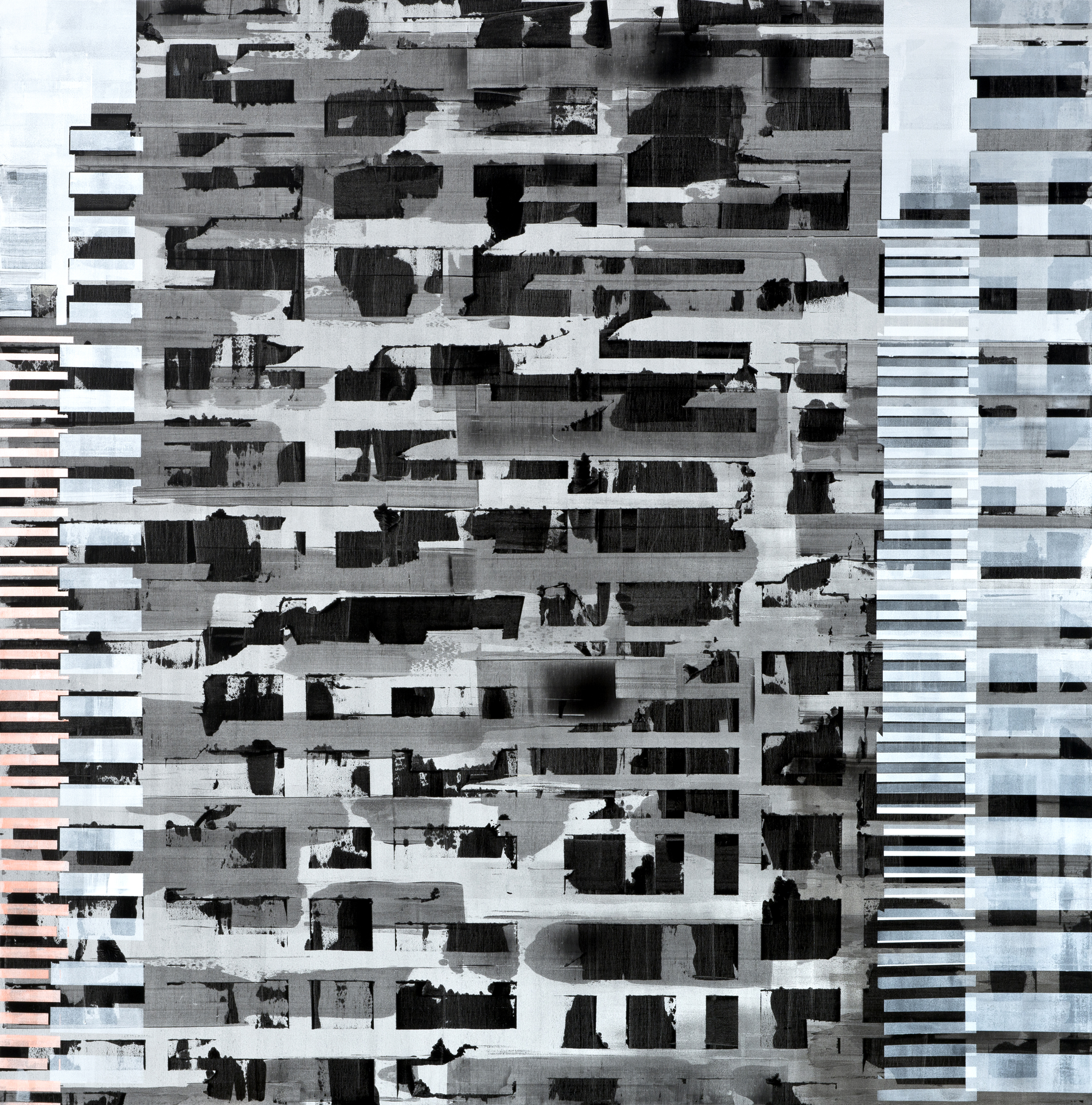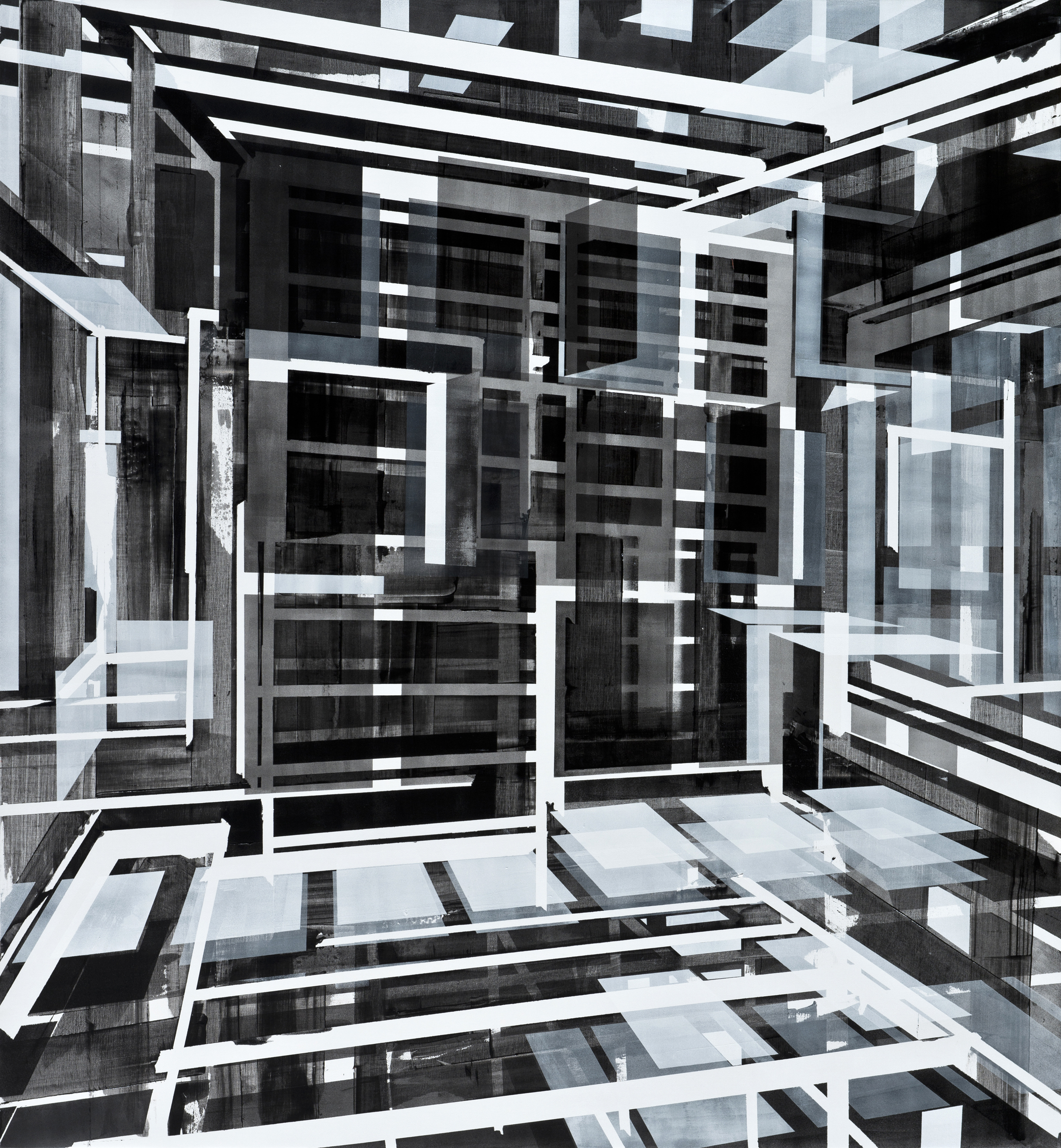Edouard Malingue Gallery is pleased to present ‘The Blissful Defect’, the second solo exhibition in Hong Kong of celebrated Turkish contemporary artist Nuri Kuzucan (b. 1971, Turkey). The show builds on work from Kuzucan’s first exhibition at the gallery, continuing to focus on the appearance of the modern city and its national anonymity. In addition to a series of eleven paintings, ‘The Blissful Defect’ will feature Kuzucan’s transformation of one of the gallery walls, creating an extension of the works’ tonal properties across the exhibition space. The collection of works aggregately, as well as individually, explores the geometries of dense urban landscapes.
From multiple perspectives, Kuzucan captures our complex surroundings; layers and folds of interior and exterior spaces are manifested in each of his paintings. Depicted from a distance, his paintings such as ‘Singularity’ portray the intricate overlap and fragmented dimensionalities of our cosmopolitan edifices. Such distance, however, is not to be confused with detachment: on the contrary, Kuzucan’s omniscience enables him to explore the intimacy amidst the anonymity of the concrete jungle. Although the majority of Kuzucan’s works are painted on square or almost square canvases, ‘The Blissful Defect’ also features four smaller ‘Untitled’ paintings, set on narrower rectangular canvases. Their elongated form brings a new perspective from which the viewer can experience Kuzucan’s towering urban landscapes.
Kuzucan uses blocks, colours and lines to define his urban structures. ‘The Loading and Reading of Density’ and ‘Dissolving’, for example, are made up of blacks, whites, and icy blues to create a bleak, almost apocalyptic atmosphere, yet blanks within the structures reveal architecture in the making/unmaking with light showing through. Flaws in the geometry are deliberately provocative, contradicting the solidarity of urban architecture. His use of paper tape is also an important aspect of his more recent works, creating the impression that it may depart from the canvas at any moment. The tapes’ delicate nature captures the ultimate fragility of modernity, despite its robust exterior.
Though devoid of human figures, Kuzucan’s works carry a whisper of humanity. He shows how modern metropolises across the world have become quantifiers of modern living, how architecture determines people’s actions and thoughts. His paintings explore the homogenisation of urban landscapes, reflecting on the simultaneously familiar and frightening experience that results. Although a person might feel comfortable in any city across the world, the uniformity of urban settings is disconcerting at the same time; it hints at the potential to transform people, causing them to act and think in an identical manner. Kuzucan thus explores society’s increased focus on space and provides reflection, as well as seeming criticism, on our manifested urbanity and celebrated contemporaneity.
The Blissful Defect










‘Surfaces’, 2016
Acrylic on canvas
180 x 175 cm

‘Dissolving’, 2016
Acrylic on canvas
190 x 180 cm

‘Base Source’, 2016
Acrylic on canvas
190 x 200 cm